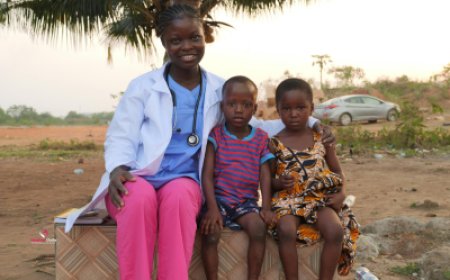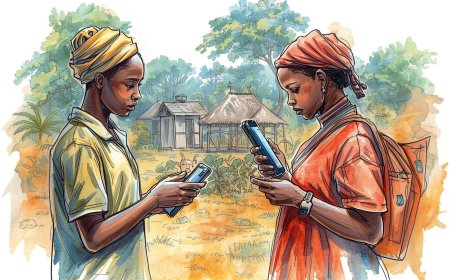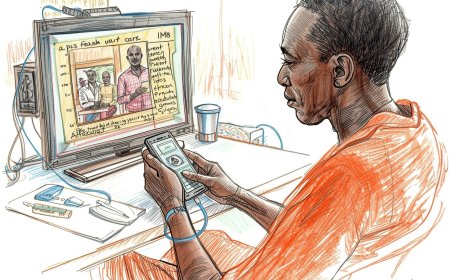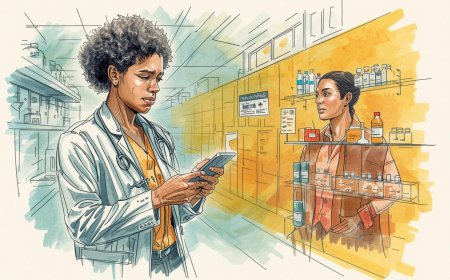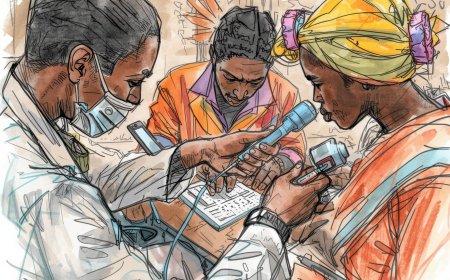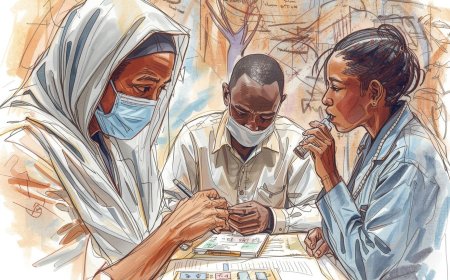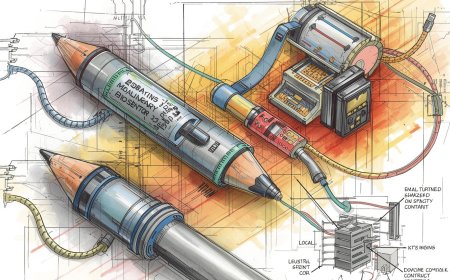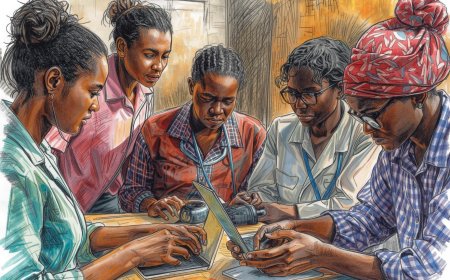Creating Patient Education That Changes Behaviour: A Content Framework
Practical, Africa-focused guide to designing patient education that actually changes behaviour — not just informs. Includes a tested content framework (audience → barriers → message → channel → evaluation), tips for low-bandwidth and low-literacy settings, CHW and digital workflows (SMS/IVR/WhatsApp/radio), case studies (MomConnect, WelTel), common pitfalls, and an implementation checklist. APA references and live links included.
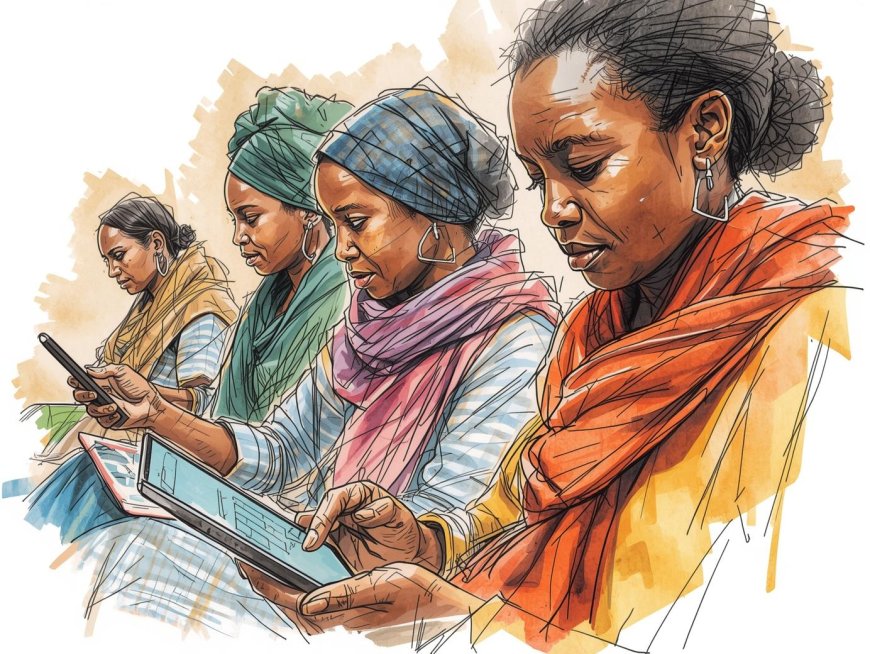
Short brief: If your patient education handout reads like a lab report and your SMS reminders read like a legal brief, people will ignore both. This guide gives a practical, evidence-based framework you can use this afternoon to design patient education (print + digital + community) that nudges real behaviour change — tailored for African realities: patchy data, many languages, variable literacy, and mobile-first audiences.
Expect: witty field anecdotes, concrete templates you can steal, and citations so you can paste sources into grant applications.
Why behaviour-change focused patient education matters (quickly)
Information alone rarely changes behaviour. To move people from “I know” to “I do,” education must consider capability, opportunity, motivation — and fit into the real day-to-day of the person you’re trying to reach (e.g., bus fares, family decision-making, who controls the purse). Frameworks like the Behaviour Change Wheel / COM-B help designers translate barriers into interventions. Digital tools (SMS, IVR, WhatsApp) can work well — but only when combined with human follow-up and local adaptation. BioMed Central+1
A one-page content framework (the core — copy it into your notebook)
Use this stepwise template for every campaign, leaflet, script, or SMS:
-
Define the behaviour (observable & measurable)
-
Example: “Attend the 6-week postnatal clinic within 6 weeks of delivery” — not “improve maternal health.”
-
-
Specify the audience (who exactly?)
-
Pregnant teens in peri-urban Kisumu; family decision-makers; CHWs; first-time mothers age 18–24.
-
-
Set the objective (short & measurable)
-
“Increase 6-week postnatal attendance from 35% → 55% in 6 months.”
-
-
Diagnose barriers & drivers using COM-B
-
Capability (knowledge, literacy), Opportunity (transport, clinic hours), Motivation (fear, norms). Use formative research (focus groups or rapid surveys). The Decision Lab
-
-
Select behaviour change techniques (BCTs)
-
Reminders, prompts, modelling, incentives, implementation intentions, social norms messaging. Map these to your barriers.
-
-
Pick channels & format
-
SMS + voice (IVR) for low-literacy; WhatsApp for urban smartphone users; printed flipcharts for CHWs; local radio for community norms.
-
-
Draft message(s) & scripts — test for clarity & local language
-
One idea per message; use active verbs; include the clear next step (where/when/how).
-
-
Design measurement / evaluation
-
Process: delivery rate, open/receipt (where possible), CHW feedback.
-
Outcome: attendance, adherence, knowledge + behaviour measures (pre/post or controlled).
-
-
Iterate — fast
-
Run A/B small tests (two message variants), use teach-back in clinics to confirm comprehension. AHRQ+1
-
Practical guidance for each step
1) Behaviour definition — be concrete and time-bounded
“Take antimalarial drugs correctly” → too vague. Instead: “Take every pill from this blister pack for 3 days, starting within 6 hours of diagnosis.” Concrete targets make measurement and messaging simpler.
2) Audience segmentation — one size fits nothing
Segment by age, gender, literacy, phone type, and decision power (who pays for transport?). A peri-urban young mother who owns a smartphone needs a different message and channel than an older woman in a rural village who shares a phone.
3) Rapid formative research — don’t skip it
Spend 3–7 days doing: 6–10 interviews + 2 small focus groups + 10 short intercept surveys. Ask: “What stops you from attending?” and “Who in your family decides about clinic visits?” Formative work pays off — UNICEF and WHO note it’s essential for behaviour change programs. UNICEF+1
4) Use theory — COM-B + Behaviour Change Wheel
Map every barrier to COM-B (Capability / Opportunity / Motivation) and then choose intervention functions from the Behaviour Change Wheel (education, persuasion, enablement, modelling, incentives). This makes your design defensible to donors and MOH reviewers. BioMed Central+1
5) Message design rules (short, local, actionable)
-
One action per message.
-
Use local languages and common idioms.
-
Put the benefit first (“Keeping baby warm reduces infections”) then the action.
-
Include a specific next step (where, when).
-
Use social proof sparingly (“Most mothers in your village return for the 6-week check”). Evidence-based messaging can nudge norms. UNICEF
6) Format & channel selection — match tech to context
-
SMS: cheap, works on basic phones — good for reminders and short prompts (evidence supports SMS for adherence). PubMed
-
IVR / voice: ideal for low literacy; record in local languages; schedule calls for convenient times.
-
WhatsApp: rich media (audio, short video) for smartphone users and group care; encryption is a plus but check privacy.
-
USSD: interactive, works without airtime sometimes, good for quick checklists.
-
Radio & community theatre: for social norms and mass reach.
-
CHW face-to-face + teach-back: essential — combine digital nudges with human reinforcement (teach-back ensures comprehension). AHRQ+1
7) Prototype & pretest with real users
Write 6–8 messages, record IVR script, and run them past 10–20 target users. Ask: “What would you do after hearing this?” and “Which words confused you?” Iterate quickly.
Case studies — African examples you can learn from
MomConnect (South Africa) — national scale SMS & nurse support
MomConnect sends pregnancy and postnatal messages and provides a helpdesk that links women to nurses. Evaluations show increased uptake of maternal services and high user reach when content was locally adapted and combined with health system links. It’s a model for national-scale patient education that ties messages to service access. PMC+1
WelTel / SMS for ART adherence (Kenya) — simple SMS, strong effect
The WelTel RCT in Kenya showed that weekly SMS check-ins improved antiretroviral adherence and viral suppression — a demonstration that short, two-way SMS can change clinical behaviours when combined with clinician follow-up. Use cases: medication adherence, appointment reminders, symptom check-ins. The Lancet+1
Practical CHW workflow (offline + digital blend)
-
CHW gets brief training (~2 hours) on the campaign & script.
-
CHW enrolls patient via simple form (paper or ODK) — collects phone type and preferred language/time.
-
System schedules messages (SMS/IVR/WhatsApp).
-
CHW does first face-to-face visit with teach-back; documents comprehension. AHRQ
-
Messages reinforce, CHW follows up for non-responders.
-
Weekly monitoring dashboard flags missed visits & override reasons for program manager.
Measurement & evaluation — what to track (keep it minimal)
-
Process indicators: % enrolled, % message delivered, % messages opened/played (IVR), CHW follow-up rate.
-
Engagement: response rate to interactive messages, call-back requests.
-
Outcome indicators (behavioural): appointment attendance, medication pick-up rates, verified adherence, facility deliveries.
-
Equity: uptake by language, gender, and rural/urban status.
Use short pre/post evaluations or stepped-wedge rollouts if feasible. WHO and UNICEF recommend embedding evaluation from day one. World Health Organization+1
Practical message bank (examples you can copy, translate, and test)
For a 6-week postnatal attendance campaign (Swahili/English templates shown as English here):
-
Reminder SMS (7 days before): “Hello [Name], congratulations! Your baby’s 6-week check is due on [date] at [clinic]. This visit helps check for jaundice and immunizations. Bring baby’s road token. Reply 1 to confirm.”
-
IVR message (2 days before): 30-second friendly voice in local language with next steps and CHW contact.
-
Reinforcement SMS (day of appointment): “Today is your baby’s 6-week check. If you can’t come, text HELP and our CHW will call.”
Always include a clear action and an easy way to get help.
Common pitfalls and how to avoid them
-
Pitfall: Long messages stuffed with facts. → Fix: One action per message; keep <160 chars for SMS.
-
Pitfall: No human backup for non-responders. → Fix: Assign CHW follow-up for all no-responses.
-
Pitfall: Using English only. → Fix: Localize language and idioms; test translations.
-
Pitfall: Ignoring data costs and device access. → Fix: Offer SMS (cheaper) or schedule IVR at low-cost hours; consider airtime top-ups for participants in pilots. The Guardian
Quick SOP to pin to your project board (one pager)
-
Enrolment checklist (consent, phone number, language, preferred time).
-
Message schedule (frequency, timing, channel).
-
CHW follow-up protocol for 24-hour non-response.
-
Escalation plan for red flags (fever, danger signs).
-
Weekly dashboard review and rapid A/B testing cycle.
-
Monthly formative check with 10 users to surface language or comprehension issues.
Budget & procurement tips (practical)
-
SMS/IVR costs: negotiate bulk pricing with local telcos; ask for delivery reports.
-
Platform choice: use CommCare, ODK, RapidPro, or a simple SMS gateway depending on complexity. RapidPro and RapidSMS are popular for large SMS/IVR campaigns.
-
Human costs: budget for CHW time, refresher training, and airtime top-ups.
-
Pilot small, scale fast: run a 3-month pilot with 500–2,000 users to validate assumptions before national scale-up.
Final one-page checklist (copy into your grant or project plan)
-
Behaviour clearly defined & measurable? Y/N.
-
Target audience segmented and described? Y/N.
-
Formative research done? (3–7 days) Y/N.
-
COM-B mapping completed? Y/N. The Decision Lab
-
Message bank prototyped & pretested? Y/N.
-
CHW & human follow-up plan? Y/N.
-
Tech platform chosen and telco priced? Y/N.
-
Evaluation metrics & budget allocated? Y/N. World Health Organization
References (APA format with live links)
-
World Health Organization. (2019). Recommendations on digital interventions for health system strengthening. https://www.who.int/publications/i/item/9789241550505. World Health Organization
-
Michie, S., van Stralen, M. M., & West, R. (2011). The behaviour change wheel: A new method for characterising and designing behaviour change interventions. Implementation Science, 6, 42. https://doi.org/10.1186/1748-5908-6-42. BioMed Central
-
WHO. (n.d.). Actionable — Behaviour change campaigns. https://www.who.int/about/communications/actionable/behaviour-change. World Health Organization
-
UNICEF. (2019). Communication for Development (C4D) — Technical guidance. https://www.unicef.org/media/73491/file/C4D-VAC-Technical-Guidance-2019.pdf.pdf. UNICEF
-
Lester, R. T., Ritvo, P., Mills, E. J., Kariri, A., Karanja, S., Chung, M. H.,… Plummer, F. A. (2010). Effects of a mobile phone short message service on antiretroviral treatment adherence in Kenya (WelTel Kenya1): A randomised trial. Lancet, 376(9755), 1838–1845. https://www.thelancet.com/article/S0140-6736(10)61997-6/fulltext. The Lancet+1
-
Kabongo, E. M., Wadzani, A., Mogeni, T., & Conde-Agudelo, A. (2019). Understanding the influence of the MomConnect programme in South Africa: A narrative review. Global Knowledge Community (HIMSS Global), and peer literature. https://pmc.ncbi.nlm.nih.gov/articles/PMC6609052/. PMC+1
-
Agency for Healthcare Research and Quality (AHRQ). (n.d.). Teach-Back: Intervention — Engaging Patients and Families. https://www.ahrq.gov/patient-safety/reports/engage/interventions/teachback.html. AHRQ
-
Yen, P. H., & Leasure, A. R. (2019). Use and effectiveness of the teach-back method in patient education and decision making: A systematic review. https://www.ncbi.nlm.nih.gov/pmc/articles/PMC6590951/. PMC
-
WHO. (2017). Strategic Communications Framework for effective communications. https://www.who.int/docs/default-source/documents/communicating-for-health/communication-framework.pdf. World Health Organization
-
The Decision Lab. (n.d.). The COM-B model for behaviour change (overview). https://thedecisionlab.com/reference-guide/organizational-behavior/the-com-b-model-for-behavior-change. The Decision Lab
What's Your Reaction?
 Like
0
Like
0
 Dislike
0
Dislike
0
 Love
0
Love
0
 Funny
0
Funny
0
 Angry
0
Angry
0
 Sad
0
Sad
0
 Wow
0
Wow
0





